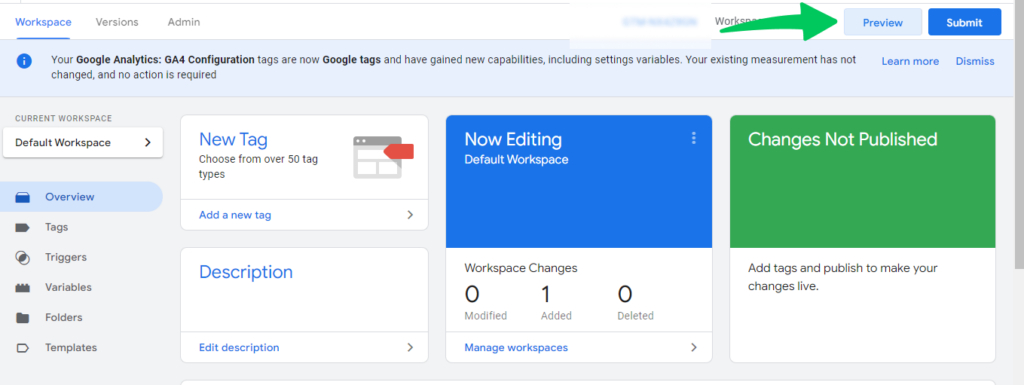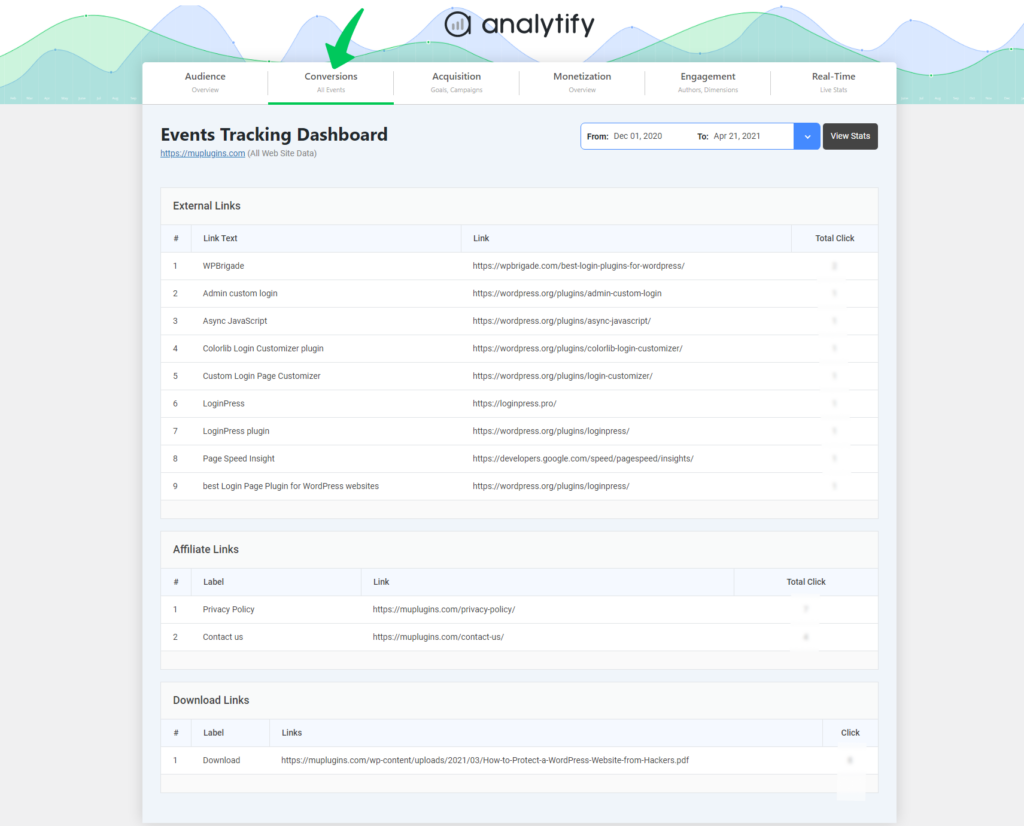
GA4 Custom Events Not Showing Up (FIXED)
Have you ever set up GA4 Custom Events, but they are not showing up in your reports?
Frustrating, right? Well, you’re not alone.
Many users experience GA4 custom events not showing up in their Google Analytics dashboard, and it can be a real headache to figure out why.
Custom events are a great way to understand user behavior in GA4. They allow you to track specific interactions beyond pre-defined events, providing invaluable insights into how users engage with your website or app.
But sometimes, despite your best efforts, those custom events seem to vanish from analytics reports. This can be incredibly frustrating, hindering your ability to measure website performance and optimize the user experience.
In this article, we’ll explain every possible reason why your custom events are not showing up in GA4 and offer straightforward solutions to get them back on track.
GA4 Custom Events Not Showing (TOC):
Get 60% OFF Analytify! Use Code BFCM60
Supercharge your analytics with Analytify this Black Friday! Enjoy a 60% discount and unlock effortless Google Analytics integration for your WordPress site. Track insights, boost performance, and make data-driven decisions. Hurry—this exclusive deal ends 2nd December!
What are Custom Events in Google Analytics 4?
Before we tackle the reasons GA4 custom events don’t show, let’s ensure we understand what custom events are and why they’re such a big deal in Google Analytics 4 (GA4).
Custom events in GA4 are like your analytics superpower. They allow you to track specific user interactions on your website that Google Analytics doesn’t automatically track. These could be anything from a video play button being clicked to a file being downloaded to a product being added to a shopping cart. These events are crucial for understanding the unique journey and actions of your visitors beyond what standard metrics can tell you.
Here’s a quick breakdown of how custom events are structured:
- Event Name: A descriptive label that identifies the action you’re tracking (e.g., “download_ebook”).
- Event Parameters (Optional): Additional details that provide context to the event (e.g., “ebook_title”: “The Ultimate Guide to GA4”).
- Event Value (Optional): A numerical value associated with the event, often used for measuring revenue or quantity (e.g., 10 for a downloaded ebook priced at $10).
For a detailed guide of GA4 custom events, check out How To Get Started With GA4 Events Tracking.
Why Your Google Analytics 4 Events Are Not Showing (Solved)
Here’s a list of 14 potential reasons your Google Analytics 4 custom events not showing up, along with solutions to bring these vents back to light.
1. Data Delay
Let’s start with a very common issue of data delay.
Unlike Santa Claus, GA4 doesn’t always deliver data overnight (although it can feel that way sometimes!). There’s a standard processing timeframe for data to flow from your website or app to your GA4 reports, typically taking 24-48 hours.
Table 1: Understanding GA4 Data Processing Timeframe
| Action | Estimated Timeframe |
| Event Triggered on Website | 24-48 hours |
| Event Data Populated in GA4 Reports | 24-48 hours after event trigger |
Solution: Before jumping to troubleshooting, give your data time to populate. It may be patiently waiting in the wings to appear in your reports within the standard timeframe.
If you’re experiencing overall data absence in GA4, check our guide on troubleshooting missing GA4 data.
2. Incorrect Event Name
This might seem like a minor detail, but in GA4, case sensitivity can be a fundamental matter for custom event not showing in GA4.
GA4 treats uppercase and lowercase letters as distinct characters. So, an event named “purchase” and “Purchase” are considered two different events by GA4.
Imagine this scenario:
- You set up a custom event named “download_ebook” to track ebook downloads.
- However, during implementation on your website, there was a typo, and the event code accidentally captured the event name as “Download_ebook.”
The result? GA4 won’t recognize these as the same event, and your “download_ebook” event will remain stubbornly absent from your reports.
Solution:
Here’s how to ensure your event names match perfectly:
- Double-check your event name: Carefully review the event name you defined in GA4 and compare it to the code implemented on your website or app.
- Maintain consistency: Make sure the case (uppercase/lowercase) is identical in both places.
- Fix any typos: Correct any typos that might be causing the mismatch.
By ensuring your event names are a perfect match, you’ll help GA4 accurately identify and track your custom events.
3. Event Not Triggered
Sometimes, even though you’ve set up the event name perfectly, your custom event in GA4 still refuses to show up. It could be because the event isn’t triggered on your website or app.
There are a couple of reasons why this might happen:
- Incorrect Implementation: Double-check the event tracking code on your website or app. Ensure it’s placed in the correct location to capture the user interaction you want to track.
- User Doesn’t Perform the Action: Consider if users are actually performing the action you’re trying to track. Maybe the button they’re supposed to click is hidden or malfunctioning.
Solution:
- Test the Event Trigger: Use debugging tools (we’ll discuss these later) to test if the event code fires correctly when the user performs the intended action.
- Review User Behavior: Analyze user behavior patterns to see if users interact with the element you’re trying to track. It might involve using heatmaps or session recordings.
- Use Analytify: The WordPress plugin Analytify can reduce event tagging issues. You won’t need to add tags manually; instead, Analytify can automatically track the events that have been created.
4. Google Signals and Data Thresholds
Sometimes, having Google Signals enabled can lead to GA4 custom events not showing up.
Google Signals leverages anonymized browsing data from signed-in Google users to enhance measurement capabilities in GA4. However, it also introduces a concept called “data thresholds.” This means that GA4 might not display events with deficient volume to protect user privacy.
How It Works:
Imagine you have a custom event tracking a specific button click on a rarely visited page. With Google Signals turned on, if only a few users click that button, GA4 might choose not to show that event in your reports due to the data threshold.
Solution:
There are a couple of ways to address this:
- Temporarily Disable Google Signals: If you need to see all events irrespective of volume for troubleshooting purposes, consider temporarily disabling Google Signals. However, remember to re-enable it later for the full benefits of Google Signals.
- Create a Custom Report: GA4 allows you to create custom reports that include all events, regardless of volume. It can be a helpful workaround to see low-volume events even with Google Signals enabled.
By understanding data thresholds and how they interact with Google Signals, you can make informed decisions about displaying your custom events in GA4.
5. Internal Filters: Friend or Foe?
Internal filters in GA4 can be powerful tools for excluding unwanted data from your reports. However, if not managed carefully, they can also be the culprit behind GA4 custom events not showing up.
Here’s the scenario:
Let’s say you’ve set up an internal filter to exclude traffic from your IP address to avoid skewing your data. Unfortunately, this filter might inadvertently exclude your custom events, leaving you wondering where they went.
Solution:
- Review Internal Filters: Double-check your internal filter configuration in GA4 to ensure the filters are not unintentionally excluding your custom events.
- Whitelist Specific Events: If you need to exclude internal traffic but still want to see your custom events, consider creating a whitelist within your internal filter to specifically allow events you wish to track.
By being mindful of internal filters and their potential impact on custom events, you can ensure your reports accurately reflect user behavior on your website or app.
6. Data Sent to the Wrong GA4 Property
It might seem like a basic mistake, but it happens more often than you think! If GA4 custom events do not show up, sending data to the wrong GA4 property can be a real reason.
Imagine this:
You set up a custom event to track user interactions. However, during implementation, you accidentally use the tracking ID for a different GA4 property. As a result, the event data gets sent to the wrong property, leaving your intended property devoid of your precious custom events.
Solution:
Here’s how to ensure your data reaches the right destination:
- Verify Tracking ID: Double-check the tracking ID you’re using on your website or app matches the GA4 property where you expect to see your custom events.
- Review Implementation: Carefully examine your event tracking code to ensure the correct tracking ID is referenced.
- Use Analytify: You can use Analytify to avoid such errors because Analytify facilitates smooth one-click GA4 tracking.
By ensuring the tracking ID aligns perfectly with your desired GA4 property, you can guarantee your custom event data arrives at the correct location.
For content-driven sites like WordPress blogs, going beyond basic pageviews to track WordPress categories in Google Analytics 4 can provide invaluable insights into user interests and content performance. Ensuring these category-specific events are correctly set up is crucial for their data to populate your reports.
7. Event Parameters Not Appearing vs. Entire Event Missing
Before diving into troubleshooting missing event parameters, let’s differentiate between two situations:
- Entire Event Missing: It means the event itself isn’t showing up in your GA4 reports. We’ve already explored several reasons for this in previous sections.
- Event Shows Up, But Parameters Are Missing: The event itself registers in your reports, but the additional details you set up (event parameters) are absent.
Understanding this distinction is crucial, as the troubleshooting approach differs for each scenario. Now, we’ll focus on the latter situation; event parameters not appearing.
Possible Reasons for Missing Event Parameters:
- Incorrect Parameter Setup: Double-check your event parameter configuration in GA4. Ensure you’ve defined the parameters correctly with appropriate names and data types.
- Parameter Not Populated: The parameter might not be capturing data as intended on your website or app. Investigate why the parameter value isn’t being populated correctly.
Solution:
- Review Parameter Configuration: Go back to your GA4 event setup and verify the event parameters are defined accurately.
- Inspect Data Collection: Investigate why the parameter value isn’t being populated on your website or app. It might involve debugging your event tracking code or working with your developer for a solution.
By addressing these potential issues, you can ensure your event parameters capture the valuable details you need to gain deeper insights into user behavior.
8. (not set) Value in Event Parameters
Have you encountered the “(not set)” value in your GA4 event parameters? This can be frustrating when you expect specific data to populate those parameters. Here’s what “(not set)” means and how to fix it:
What Does “(not set)” Mean?
It simply indicates that the event parameter is not capturing any data from your website or app. In simpler terms, the parameter is sending an empty message to GA4, hence the “(not set)” label.
Why Does This Happen?
There are a couple of reasons why you might see “(not set)” for your event parameters:
- Incorrect Parameter Configuration: Double-check your event parameter setup in GA4. Did you define the parameter name correctly? Did you specify the appropriate data type (e.g., text, number)?
- Parameter Not Populated on Website/App: The issue might lie in your event tracking code implementation. Is the code capturing and assigning the intended data to the correct parameter?
Solution:
- Verify Parameter Configuration: Review your event parameter setup in GA4. Ensure the names and data types are defined accurately.
- Investigate Data Collection: Debug your event tracking code to understand why the parameter value isn’t being populated correctly. Is the data available on your website or app? Is the code configured to capture and assign it to the parameter?
You can also read our detailed guide: How To Fix not Set In Google Analytics Reports.
Addressing these causes can transform the “(not set)” into a clear picture, enriching your event data with valuable details.
9. Event Name Length Restrictions
There’s a hidden rule in the world of GA4 custom events: event names have a character limit! While it might seem like a minor detail, exceeding this limit can lead to GA4 custom events not showing up in your reports.
How Long Can Event Names Be?
Currently, GA4 allows a maximum of 40 characters for event names, including letters, numbers, and underscores.
What Happens If I Exceed the Limit?
If your event name surpasses the 40-character limit, GA4 might shorten it or not recognize it altogether. It can result in missing events or inconsistencies in your reports.
Solution:
Here’s how to ensure your event names fit within the limit:
- Review Event Names: Check the length of your event names in GA4.
- Shorten If Necessary: If you exceed the limit, consider shortening the event name using abbreviations or removing unnecessary words.
- Maintain Clarity: While shortening, prioritize clarity. The event name should still accurately reflect the action you’re tracking.
By keeping your event names concise and within the character limit, you can guarantee that GA4 recognizes and processes them accurately.
10. Ad Blockers: The Unforeseen Culprit
In our quest to eliminate the problem of GA4 custom events not showing up, we can’t ignore the potential interference of ad blockers.
Many users rely on ad blockers to enhance their browsing experience by blocking unwanted ads and trackers. Unfortunately, some ad blockers might unintentionally block event tracking scripts essential for capturing custom events.
How It Affects You:
If an ad blocker interferes with your event tracking scripts, GA4 might not receive the necessary data to register your custom events.
Solution:
- Request Temporary Disabling: While not ideal for all users, you can advise users to temporarily disable their ad blocker and test if their actions trigger the custom events. It can help confirm if ad blockers are the culprit.
- Consider Alternative Tracking Methods: Explore alternative tracking methods that might be less susceptible to ad blocker interference. It could involve server-side tracking or working with a developer to implement a more robust tracking solution.
By being aware of ad blockers and their potential impact, you can take proactive steps to ensure your custom events are accurately captured.
11. Conflicting Tracking Codes
To resolve the issue of missing GA4 custom events, we can’t ignore the potential for conflicting tracking codes. While it might seem like a simple setup, having multiple tracking codes from different analytics platforms can sometimes lead to unexpected behavior and data inconsistencies.
How It Happens:
Imagine you’re using GA4 alongside another analytics platform, such as a custom analytics solution. Both platforms might rely on tracking codes embedded in your website or app.
The Conflict Arises:
If these tracking codes aren’t configured to work harmoniously, they might interfere with each other. This interference can sometimes lead to GA4 custom events not being captured or registered correctly.
Solution:
- Identify Conflicting Codes: Review your website or app code to see if there are tracking codes from other analytics platforms alongside your GA4 tracking code.
- Prioritize or Remove: Decide if you need data from both platforms. If not, consider removing the unnecessary tracking code to avoid conflicts.
- Compatibility Checks: If using multiple platforms, research their compatibility and explore recommended configurations to minimize interference.
- Use Analytify: Analytify helps you overcome such issues by smoothly taking responsibility for all your tracking codes if you’re a WordPress user. You won’t need to deal with tracking codes; instead, Analytify does it for you.
12. Exceeding Event Limits in GA4
Google Analytics 4 (GA4) offers a powerful event tracking system, but it has limitations on the number of events it can process effectively. Exceeding these limits can lead to incomplete data and inaccurate insights. Here’s a breakdown of the issue:
- Limited Capacity: GA4 can’t track an unlimited number of events. There are restrictions on the total number of events, event names, parameters, and user properties.
- Data Loss: If you exceed the limits, GA4 simply won’t process the excess data. This means you’ll miss valuable user interactions and lose insights into their behavior.
- Inaccurate Reporting: Incomplete data leads to skewed reports and misleading conclusions. You might make decisions based on inaccurate information.
Step-by-Step Solution:
1. Review GA4’s Event Tracking Limits:
- Event Names:
- Web data streams: No limit on unique event names.
- App data streams: Limited to 500 unique event names per user per day.
- Event Parameters: Maximum of 25 parameters per event.
- Parameter Length:
Parameter value: 100 characters.
2. Prioritize and Manage Your Events:
- Identify Critical Events: Analyze your user journey and pinpoint the most important user interactions you need to track. These are your “high-priority” events.
- Consolidate Similar Events: If you have multiple events capturing similar user actions, consider combining them into a single event with relevant parameters.
- Use Event Parameters: Use parameters to capture additional details about each event, Document Your Events: Maintain a clear documentation of your events, including their purpose, parameters, and priority level.
13. SDK or API Limitations
The way you interact with GA4, whether through the official SDK (Software Development Kit) or the Measurement Protocol (API), can introduce limitations on event tracking. Understanding these limitations is crucial for optimal data collection.
- SDK Restrictions: The GA4 SDK might have limitations on the number of events it can buffer or batch for sending, potentially leading to data loss.
- Measurement Protocol Constraints: The Measurement Protocol has specific limitations on the format and structure of data you can send, which could hinder accurate event tracking.
14. Tagging Errors
Incorrect implementation of event tracking tags in Google Tag Manager (GTM) or directly within your website’s code can lead to a critical issue. GA4 won’t capture your custom events. This means valuable user interactions go unrecorded, resulting in incomplete data and inaccurate insights.
Step-by-Step Solution:
1. Review and Correct Tags:
- Scrutinize GTM Setup: If using GTM, review your event tracking tags for accuracy. Ensure the event name, parameters, and triggers are configured correctly.
- Inspect Website Code: If implementing tags directly in your website code, double-check the syntax and placement of the GA4 event tracking snippet.
Analytify Solution:
- Automated Tagging: Analytify can automatically tag events on your website, reducing the risk of manual errors associated with tag implementation.
- Reduced Workload: Utilizing Analytify can ease the burden of event tracking setup, and tagging issues and free you to focus on data analysis and insights.
When dealing with custom events in GA4, you’re looking for deeper insights into user behavior. Scroll depth tracking is a valuable type of custom event that allows you to analyze how far users scroll down your pages. This provides detailed information beyond simple pageviews, helping you understand content engagement more effectively.
If your custom events aren’t appearing in your reports, a fundamental troubleshooting step is to verify the proper installation and configuration of your GTM ID.
When setting up custom event tracking in GA4, Google Tag Manager is a popular choice for its flexibility. However, if you’re experiencing issues with GA4 custom events not appearing in reports, or if you’re looking for different approaches to tag management, exploring Google Tag Manager alternatives can provide insights into other methods for managing your website’s tracking and ensuring accurate data collection for your events.
Get 60% OFF Analytify! Use Code BFCM60
Supercharge your analytics with Analytify this Black Friday! Enjoy a 60% discount and unlock effortless Google Analytics integration for your WordPress site. Track insights, boost performance, and make data-driven decisions. Hurry—this exclusive deal ends 2nd December!
Debugging and Verification Tools for GA4 Custom Events not Showing
So far, we’ve explored many reasons why GA4 custom events might not be showing up. But how can you diagnose the exact culprit in your specific situation? Fear not, GA4 offers a treasure of debugging and verification tools to shed light on the mystery.
Here are two powerful options:
1. GA4 Debugging View:
- This is a special view within your GA4 property specifically designed for testing and troubleshooting event tracking.
- When enabled, the debugging view provides real-time data about events triggered on your website or app.
- This view can be used to test your event tracking code and verify whether events are firing correctly when users perform specific actions.
2. Google Tag Manager (GTM) Preview Mode:

- If you’re using Google Tag Manager (GTM) to manage your event tracking code, the preview mode is your best friend.
- This mode allows you to simulate user interactions on your website and see how your GTM tags fire in real time.
- GTM preview mode lets you pinpoint any issues with your event tracking code before pushing it live to your website.
Benefits of Debugging Tools:
- Identify Errors: Quickly diagnose issues with your event tracking code implementation.
- Test Triggers: Verify if events are firing correctly when users perform specific actions.
- Validate Data: Ensure the correct data is being captured and sent to GA4.
By leveraging these debugging and verification tools, you can transform troubleshooting from a guessing game into a systematic process, ensuring your custom events are tracked accurately and provide valuable insights into user behavior.
If your custom events are not showing up in GA4 reports, there could be several reasons, including incorrect event configuration, missing permissions, improper setup or tracking issues or delays in data processing.
Utilizing a comprehensive guide on Mastering Google Tag Manager Event Tracking can help resolve these issues effectively.
This issue can also arise when tracking third-party tools like Calendly. To ensure smooth tracking, follow the right steps to troubleshoot Calendly event tracking in GA4 and confirm that bookings appear correctly in your analytics dashboard.
Introducing Analytify: Effortless Event Tracking for WordPress Users
For WordPress users seeking a smoother approach to custom event tracking in GA4, consider leveraging a powerful google analytics plugin; Analytify. This user-friendly plugin simplifies the process of setting up and managing custom events, eliminating the need for manual coding or reliance on GTM.
With Analytify, you can:
- Effortlessly Configure Events: Set up custom events directly within your WordPress dashboard with a user-friendly interface.
- Automatic Tag Implementation: Analytify automatically inserts the necessary tracking code, ensuring seamless data collection.
- Real-time Event Tracking: Monitor event triggers and data flow in real time within the Analytify plugin on your WordPress site.
- Seamless Integration: Enjoy a smooth connection between your WordPress website and GA4, streamlining your event tracking process.
Check out our more comprehensive articles about GA4:
Which Tags are Standard Google Analytics Campaign Parameters?
How to Use GA4 Path Exploration Report?
What is Enhanced Measurement in Google Analytics 4?
How to Track Affiliate Links in Google Analytics 4?
Join 50,000+ beginners & professionals who use Analytify to simplify their Google Analytics!
By using debugging tools and exploring solutions like Analytify, you can transform troubleshooting from a guessing game into a methodical process, ensuring your custom events are tracked accurately and providing valuable insights into user behavior.
While troubleshooting issues with GA4 custom events not appearing in reports is critical for any platform, these events are particularly vital for app design. By correctly tracking user interactions and behaviors through custom events, you can gather the necessary data to guide app design decisions and improve user experience.
FAQs on Google Analytics 4 Events Not Showing
1. Why is my GA4 custom event not showing in reports?
If your GA4 custom event is is not showing in reports, it could be due to incorrect event configuration, tagging errors, or issues with the data layer. Ensure your event names follow GA4 guidelines, check for correct tagging in Google Tag Manager, and verify the data layer for accuracy.
2. How long does it take for custom events to show up in GA4?
Custom events in GA4 may take up to 24-48 hours to appear in your reports due to data processing times. If you’ve just set up or modified an event, allow some time for the data to appear. You can use the Real-time section in GA4 to see immediate activity.
3. What should I do if GA4 custom events are not showing up?
If GA4 custom events are not showing up, start by checking the configuration of your events in GA4 and Google Tag Manager for any errors. Utilize the DebugView feature in GA4 for real-time debugging and ensure that any data filters are not excluding your events.
4. Can browser ad blockers affect my GA4 event tracking?
Yes, browser extensions like ad blockers can prevent GA4 events from showing. They can also block the tracking scripts needed to capture event data. Test your site with ad blockers disabled, and consider advising your users to whitelist it.
5. Why are some of my custom events not showing in GA4, while others are?
If some custom events are not showing in GA4, but others are, it could indicate a problem with specific event configurations or data layer issues. Review each event for correct setup and ensure consistent data layer implementation across your site.
6. How can I verify that my GA4 custom events are correctly set up?
To verify that your GA4 custom events are correctly set up, use GA4’s DebugView feature. It allows you to see events being tracked in real-time. Also, check your event configurations against GA4’s documentation to ensure they meet the necessary criteria.
7. What role does Analytify play in resolving GA4 custom events that are not showing?
Analytify simplifies the integration of GA4 custom events with WordPress, reducing the likelihood of GA4 custom events not showing. It provides an intuitive setup process, a real-time event tracking dashboard, and easy access to support for troubleshooting any issues related to GA4 event tracking on your WordPress site.
Conclusion
We’ve discussed in detail the 14 reasons why your gA4 custom event not showing along with their solutions and best practices.
You’re now equipped with a comprehensive toolkit to diagnose and address the issues behind missing events.
Remember, a successful investigation often starts with patience. Allow GA4 some processing time (24-48 hours) before jumping to conclusions. Then, delve into the potential causes we’ve explored.
- Double-check event names, case sensitivity, and tracking ID accuracy.
- Utilize debugging tools like GA4 Debugging View and GTM preview mode to test triggers and identify code errors.
- Consider internal filters, data thresholds (with Google Signals), and ad blocker interference.
- For WordPress users, explore streamlined event-tracking solutions like Analytify.
When investigating why custom events aren’t appearing in your GA4 reports, it’s beneficial to understand GA4’s broader ecosystem and its relationship with other Google platforms.
A common area of confusion, especially for app developers, lies in distinguishing between GA4, Firebase Analytics, and the broader Firebase platform, as data collection methods can vary and impact your reporting.
When troubleshooting why GA4 custom events aren’t appearing in your reports, familiarity with Google Tag Manager terminology can significantly speed up the process. A comprehensive Google Tag Manager glossary can help clarify terms like ‘tags,’ ‘triggers,’ ‘variables,’ and ‘data layer,’ which are all essential for correctly setting up and debugging custom event tracking in GA4.
You may also like to know How to Fix Google Analytics Real Time Not Working? and How to Fix Missing Revenue in Google Analytics 4?
We hope you know why GA4 custom events are not showing up and how to fix them!
Now, we’d love to hear from you. In the comments, tell us what caused your custom events not to show up.






